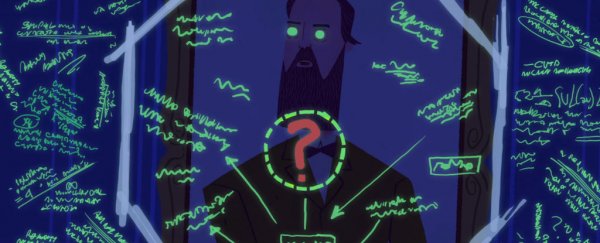
There's no denying that humans are incredible creatures, capable of putting a rover on Mars, detecting gravitational waves, and finding the Higgs boson. But until we become true cyborgs, deep down, we're all still just mammals. This means, no matter how hard we try to rise above it, peculiar behaviours persist, and one of the strangest is our belief in crazy conspiracy theories that, for the most part, make zero sense.
What's even stranger than us needing something (anything) to believe in, is the fact that we pretty much can't avoid it - we humans love to find order in chaos, and from there, we get Herman Melville the soothsayer, the faked Moon landing, and climate change denial.
As this TED-Ed video points out, if you took the entire text of Herman Melville's Moby-Dick, and arranged them into a rectangle, you'll find predictions about the Martin Luther King assassination, and the death of Princess Diana.
Weird, right? Well, not really, because in a world of random chaos, we humans rely on order, and our brains will do whatever it takes to get it, whether it's finding word patterns in a haphazard mess of letters, or familiar shapes in the constellations above us. This is all explained by a mathematical principle called Ramsey Theory. (If you broke out in nervous hives just then, I don't blame you.)
Named after British mathematician and philosopher Frank P. Ramsey, Ramsey Theory states that, "Given enough elements in a set or structure, some particular interesting pattern among them is guaranteed to emerge."
The video above gives a perfect example of Ramsey Theory in action, called the party problem. Imagine you're at a party with just six other guests. Without knowing anything at all about these people, it's a mathematical inevitability that some group of three of them either all know each other, or have never met before, based on the number of possibilities that can be applied to the group.
But the mathematical equation it takes to figure this out with just six people gets out of control the moment you start adding more and more people in, because the number of possibilities becomes overwhelming, even for as few as 40 or 50 people.
Seriously, if you wanted to use this equation to find a group of five people in a party of 48, who either all know each other, or have never met, you'd end up with more possibilities than there are atoms in the Universe.
"What this shows us is that specific patterns with seemingly astronomical odds can emerge from a relatively small set," says the TED-Ed video. "And with a very large set, the possibilities are almost endless."
It's a mathematical inevitability that the stars in our sky are arranged in familiar shapes, and the letters in a novel appear to conceal a 'prophecy', and we humans have been conditioned to find them.
But just as maths makes conspiracy theories an inevitability, so too does it render even the most persistent ones impossible. How? You can read more about it here, but let's just say that the suppression of a cancer cure would have been leaked by someone inside big pharma in just 3.2 years.
